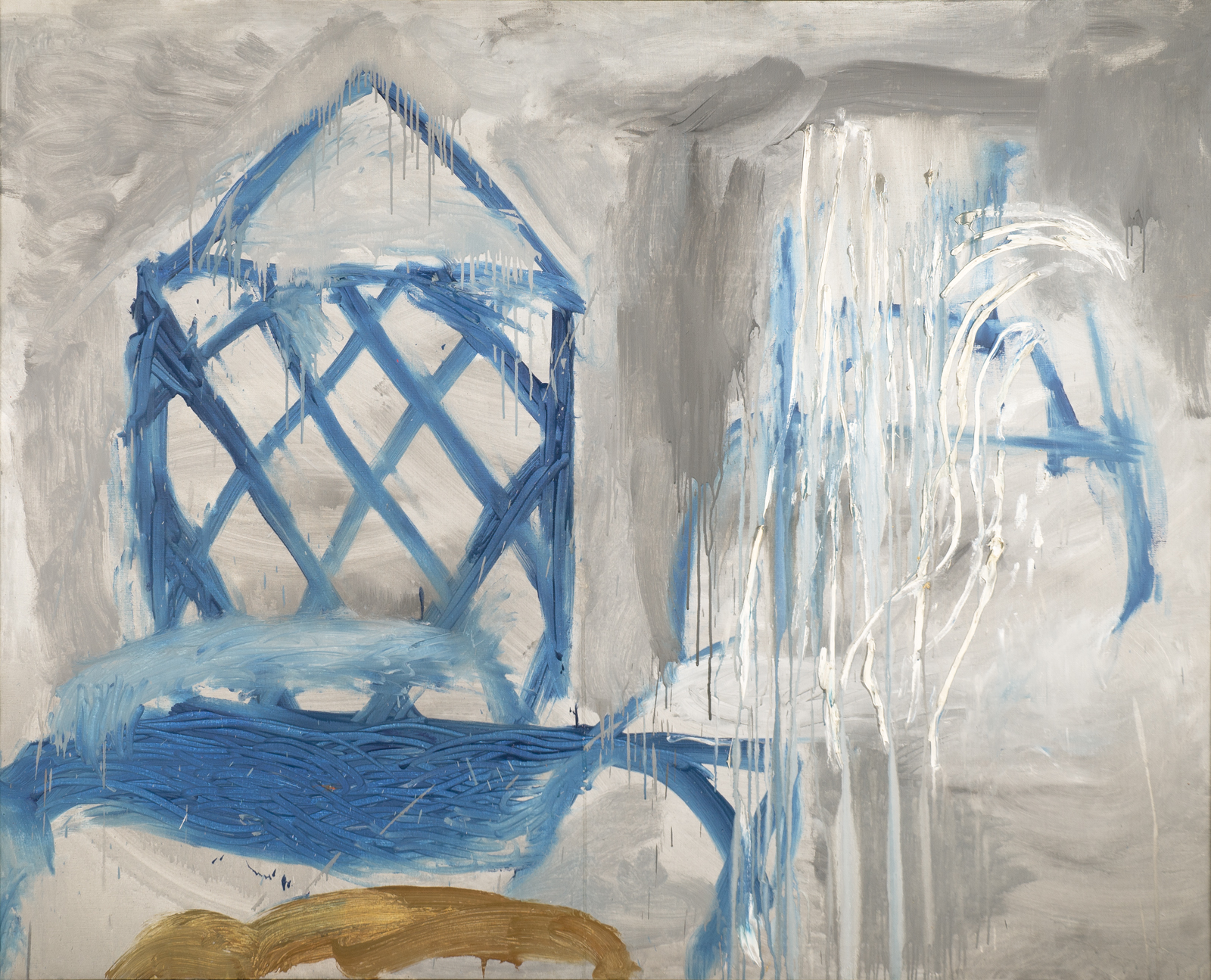José Manuel Broto’s earliest steps as an artist are grounded in the aesthetic principles championed by the French

tendencia artística que se oponía a movimientos como el minimal y el neodadaísmo en favor del propio acto pictórico. Los componentes de este efímero grupo concedían la misma importancia a los materiales, al gesto pictórico y a la obra acabada, desplazando el tema a un segundo término.
group as well as in his role in founding
Trama, a multidisciplinary collective that defended what was called
, or pure painting, advocating the act of painting in opposition to the conceptual trend in vogue in Catalonia at the time and also as an alternative to the

an art movement from Madrid in the early 1970s. Its defining feature was a provocative use of colour in response to the darkness and the Informalismo of preceding periods. Its members defended the creation of art rooted in Spanish tradition, removed from the trends prevailing in Europe at the time.
movement which was gaining force in the art world. Broto’s response was the development of a minimalist visual idiom pursuing a combination of chromatic forms eschewing any avowed meaning.
After this period of
, in the 1980s Broto evolved towards a brand of abstraction lending a major role to colour, coupled with abstract forms or references to geometric elements. His way of interpreting figures always found a middle ground between Figuration and Abstraction materialised in a gestural vernacular reminiscent of early

A tendency that emerged within abstract painting in 1945 in France, as a reaction against the excessive coldness of

A term introduced in the 1920s to name a kind of abstract art based on scientific and mathematical principles. The main goal was to eliminate all subjectivity in favour of art based on the essence of geometric forms. Its main champions were Wassily Kandinsky (1866-1944), Kazimir Malevich (1879-1935) and Piet Mondrian (1872-1944).
and attempting to give more room to the expression of the artist’s emotions. The movement favoured colour over form through techniques like watercolour and oil paint, which would be the most widely used by its practitioners. Major sources of inspiration were the painting of Vassily Kandinsky (1866-1944) and automatism in Surrealist painting. Key names within the movement are Pierre Soulages (1919), Georges Mathieu (1921-2012) and Hans Hartung (1904-1989).
, featuring elements like stairs, grilles, fountains... —elements also present in the works of Joan Miró (1893-1983) and Antoni Tàpies (1923-2012)— invariably floating against a background, thus conferring an aura of mystery and mysticism. Colour and brushwork here are of primary importance. The nervous gesture, the spontaneous brushstroke, the stains and drips, the use of scribbling reminiscent of calligraphic writing, are all reminders of his connection with

deriving from the French word “tache” (stain or spot), the name of this movement was coined by the French critics Charles Estienne and Pierre Guéguen and popularised by an essay written by another art critic: Michel Tapié. Born as a reaction to

A term coined by the French critic Louis Vauxcelles (1870-1943) to designate the art movement that appeared in France in 1907 thanks to Pablo Picasso (1881-1973) and Georges Braque (1882-1963), which brought about a definitive break with traditional painting. Widely viewed as the first avant-garde movement of the twentieth century, its main characteristic is the representation of nature through the use of two-dimensional geometric forms that fragment the composition, completely ignoring perspective. This visual and conceptual innovation meant a huge revolution and played a key role in the development of twentieth-century art.
and often considered to be the European equivalent to Abstract Expressionism, Tachisme is characterised by spontaneous brushwork, dripping and blobs of paint straight from the tube, and sometimes scribbling reminiscent of Japanese calligraphy.
.
The storm in the title of this work announces a connection with the Northern European tradition of the
sublime, a term coined in the Romantic period. Passionately, almost feverishly, Broto renders the feeling which the power of Nature provokes in him through the

in art, dripping or drip painting is a technique of applying paint by pouring or dripping it directly on the canvas, generally lying horizontally on the ground. This technique is usually associated with action painting, a term coined by Harold Rosenberg in 1952 to describe the work of Jackson Pollock.
s plattered across the canvas, veiling or obscuring the iconic-like figures.
Though instrumental in reinforcing the violence and the disquieting sensation emanating from the composition, the palette of greys and blues used here contrasts strongly with the habitual warmth of other works by this artist in the BBVA Collection.









